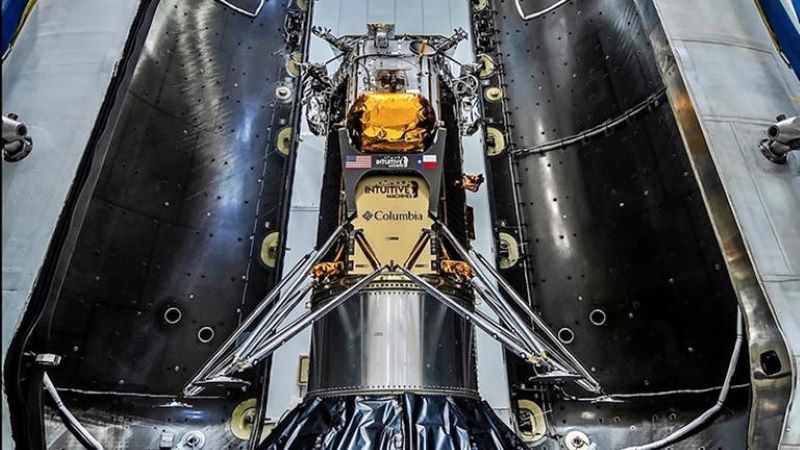Moon: Private lunar lander from SpaceX to launch on Valentine’s Day

SpaceX: The first lunar spacecraft of the Intuitive Machines-built Nova-C class is scheduled to arrive at the Moon’s surface soon.
Under NASA’s Commercial Lunar Payload Services (CLPS) program, the mission is expected to launch on Wednesday, February 14, 2024, at 12:57 a.m. as part of the Artemis campaign.
When Launch Complex 39A at NASA’s Kennedy Space Center in Florida hosts SpaceX’s Falcon 9 rocket, history will be made.
“Their tireless efforts have brought us to this moment, where we stand on the precipice of history, humbled by the gravity of our mission, yet emboldened by the boundless possibilities that lie ahead,” President and CEO Steve Altemus underlined the mission’s major significance.
SpaceX’s Nova-C lunar lander at Moon
Now that it is fully assembled, SpaceX’s Nova-C lunar lander can be securely placed within the payload fairing and prepared to go on its journey to the Moon.
The spaceship will land in Malapert A, a satellite crater close to the south pole of the moon. This area, named for the Belgian astronomer Charles Malapert who lived in the 1600s, is made up of lunar highlands that look a lot like the landing spot for Apollo 16.
Situated in close proximity to the Malapert Massif, one of thirteen candidate regions being evaluated by NASA for the Artemis III mission, the IM-1 landing site is situated in a strategic location around 300 kilometers from the lunar south pole.
The landing site’s selection highlights the significance of the mission in facilitating subsequent human investigations and establishing a human presence on the lunar surface that is sustainable.
Also read: https://blogsyear.com/vyommitra-to-launch-into-space-in-the-third-quarter-of-2024-singh/
Peregrine lunar lander failure at Moon
A few weeks have passed since the Peregrine lunar lander failed after takeoff due to a fuel leak, which accounted for the loss of the program’s inaugural private mission. Payloads designated for the Moon were aboard the spacecraft for NASA.
The mission carries not only technological payloads and scientific instruments, but also the aspirations of humanity to expand the frontiers of our understanding and capacities in outer space, as the global community eagerly awaits its launch.
NASA’s Artemis program foresees that the triumph of the IM-1 mission will establish a precedent for subsequent missions and ultimately facilitate the re-establishment of human presence on the Moon.







